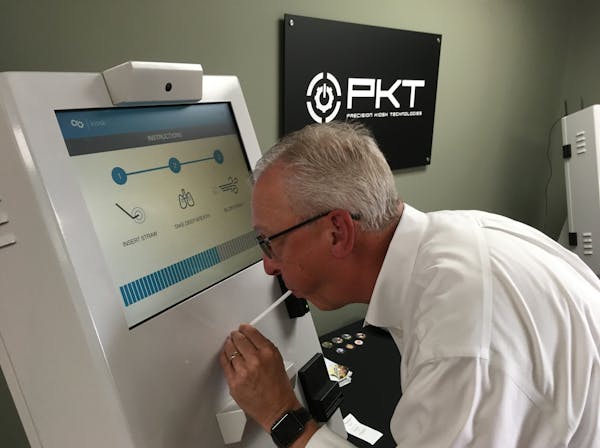Within five years, a quarter of the U.S. workforce will be 55 or older, and many people hope and expect to keep working into their late 60s and beyond.
But age discrimination is a growing concern among workers and job seekers.
Between 1990 and 2017, the number of age-related discrimination charges filed by those 65 and older has doubled, according to the Equal Employment Opportunity Commission.
With low unemployment, the issue is taking on greater urgency, said Steve Jewell, a Twin Cities human resources veteran who organized a forum Wednesday for recruiters and hiring managers to discuss the impact of an aging workforce.
"Are we ignoring a readily available workforce because we've got them tagged as too old, not interested, too close to retirement, not-native technology and all sorts of barriers?" he said.
Aside from being a legal risk for companies, age discrimination and negative workplace perceptions about the value of older workers could curb the state's economic growth. Minnesota has 140,000 open jobs, yet only half that many people are looking, according to state data.
"We are treating the workforce as a crisis of the moment," Steve Grove, commissioner of the State Department of Employment and Economic Development, told attendees of the forum sponsored by the Minnesota Talent and Recruiting Network.
Today, about a quarter of 65- to 74-year-olds are still in the workforce. Projections show that in 2024, Minnesota will have 3.1 million jobs, but only about 2.7 million working-age adults will be employed. If current employment levels continue, older adults could help fill about half of the shortfall, according to the Wilder Foundation.
"We need to make sure the hiring process doesn't filter out older workers just based on preconceived notions about what success looks likes," Grove said. "Just because we're in an economy that is driven by technology, innovation and fast-paced growth doesn't mean that only benefits you if you're 35 and under."
Yet a growing number of older workers feel the subtle and difficult-to-prove hand of ageism. A 2018 report by the U.S. Equal Opportunity Commission found that age discrimination toward older workers persists 50 years after Congress passed the Age Discrimination in Employment Act.
In 1990, almost twice as many ADEA charges were filed by men than women. In 2010 the number of women filing age charges surpassed the number of men for the first time, a trend that continues.
"Today, age discrimination is more like, than different from, other forms of discrimination," the report found.
At Wednesday's forum, panelists argued that experienced workers may be the most underappreciated assets of the U.S. economy. It's time for businesses to recognize age as another form of workplace diversity, they said, and begin rooting out ageism and outdated perceptions about older workers. "I cannot tell you how many people I have met with who are over 50 in their organizations who say, 'I feel invisible for the very first time in my career,' " said Philomena Satre, the director of diversity and inclusion and strategic partnerships at Land O'Lakes.
She encouraged organizations to examine workplace culture and how it values employees at different ages and stages of their careers.
Perceptions about what is "old" differ, Satre said, describing a scenario at an AARP "Disrupt Aging" event. "We had a 21-year-old intern say he thought 30 was old. For those of us in the over-55 crew, we thought it was 80 or 90."
Language matters, as well, panelists said. Joking about a "senior moment" plays into assumptions that older workers lack creativity and mental agility, said Chris Farrell, an author and economic commentator. Calling interns "kids" devalues their skills and perpetuates a generational divide.
Older workers who want to downsize their responsibilities may not be "settling," but instead realigning their personal goals in a way that might also suit the company, said Kate Schaefers, executive director of the University of Minnesota's Advanced Careers Initiative.
Stereotypes show up in job postings that seek "a young, energetic person," Schaefers said.
Research shows that companies devote only a small part of their training budgets toward workers over 40. And fewer than 14% of major corporations have a formal phased retirement path that might allow companies to take advantage of older workers' institutional knowledge and mentorship abilities as they scale back.
State Demographer Susan Brower reminded the audience that there will be another decade before baby boomers move out of the labor force and that it's vital for businesses to adjust to the needs of an aging workforce.
"The transition we're going through right now is more or less a permanent one from a younger society to an older one," she said. "The practices we put in place right now potentially are here to stay."
Jackie Crosby • 612-673-7335
Carolyn Parnell, 'trailblazer' who served as Minnesota's first IT commissioner, dies


